A Jewish wedding connects all who are present to the beautiful rituals and customs of Judaism from over 2,000 years old. After every Jewish wedding ceremony I officiate, I am often approached by guests stating, “A beautiful ceremony offered such meaning for us – you gave more than we expected!” A Jewish wedding ceremony keeps the ceremony as the central focus of the day and the reception for its true meaning – to celebrate.
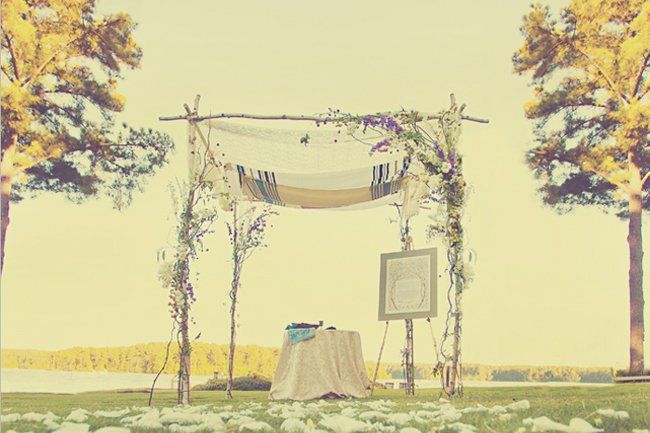
Before The Ceremony
Blessings to the Bride and Groom from the Parents
It is children who reveal the foundation of, not only Jewish life, but family life. Parents raise their children to become adults and, when the family tree grows bringing two families together by marriage, parents are honored and provide their blessings from generation to generation.
The Ketubah
The Jewish tradition of the Ketubah (the Jewish marriage contract) is over two thousand years old. Before the ceremony, the Ketubah is signed in the presence of two Jewish witnesses. The text of our ketubah describes a couple’s commitment to each other and their promises for future life and family. The reason for the non-related Jewish witnesses is that they represent the Jewish community.
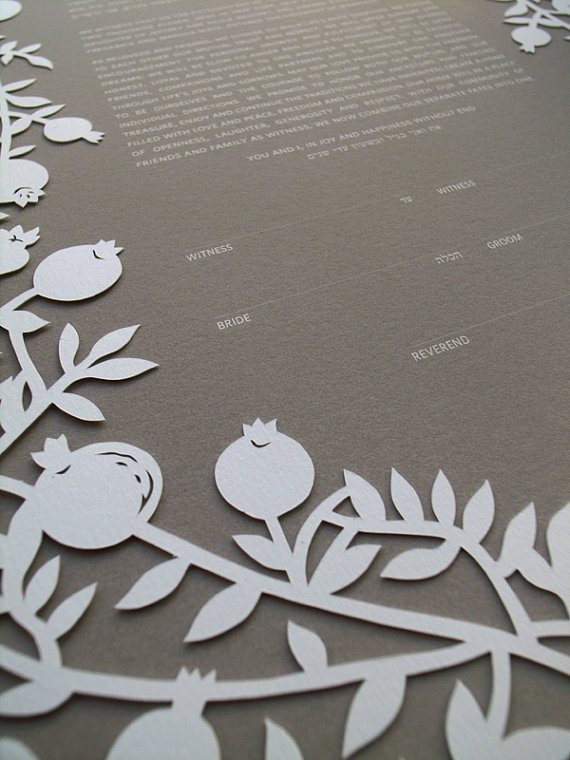
Badeken (the veiling of the bride)
After the signing of the Ketubah, in the same place, the Badeken, (the veiling of the bride by her bridegroom). This tradition goes back to biblical times when Jacob was deceived in thinking he was marrying Rachel, but instead her sister, Leah because not only was she veiled during the ceremony, but also she was the first born daughter. Rabbis today continue this tradition since it part of the Jewish wedding ceremony customs. The bridegroom states to the Rabbi, “Yes, she is indeed my bride without question!”
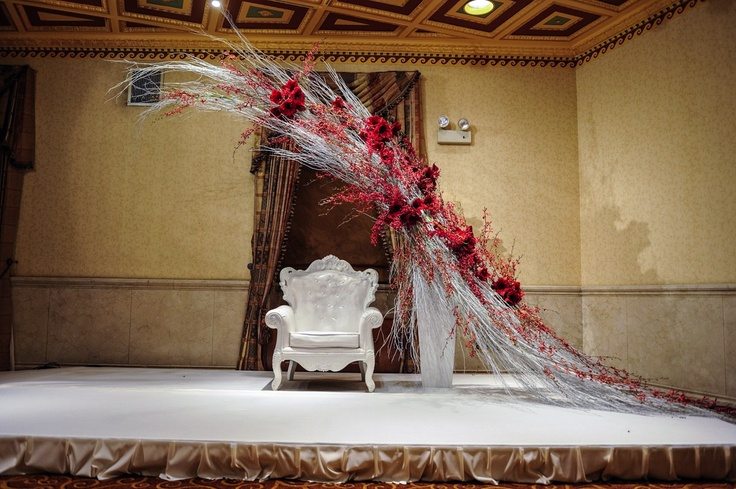
The Kippah
The Kippah (yarmulke) is the Jewish head covering. It is worn as a sign of respect during ceremonies for a couple receives God’s blessings. For today’s modern couples, to be equal, a bride will place a wedding Kippah (yarmulke) on her bridegroom after she was veiled by her bridegroom.
During The ceremony
Parents Involvement
Parents escort their children to the Chuppah. It is not a ‘giving away” act of any kind. Parents stand on each side of the Chuppah symbolizing the importance of family involvement. By this act, it is joining two families by marriage, and not just two individuals. Parents of the bride escort their daughter only half-way down the aisle. They walk ahead to the Chuppah, take their place, for the groom will escort his bride to the wedding canopy.
The Chuppah
The Chuppah (wedding canopy) is the focus of all Jewish wedding ceremonies. It is intended to create an intimate, sanctified space symbolizing the home that the bride and groom will share together. The sides are left open to signify that all friends and family are welcome into their new life and home.
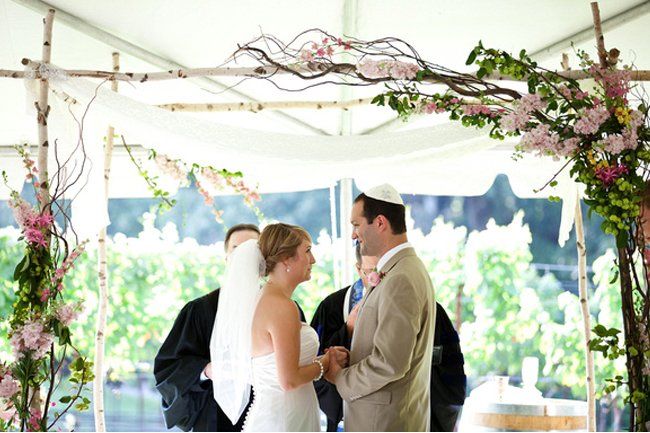
The Kiddush Cup
A couple shares two cups of wine during the ceremony from an heirloom and a new Kiddush cup (wine goblet). The sweetness of the wine represents the sweetness of the love for each other. It sanctifies each couple’s marriage during their wedding ceremony.
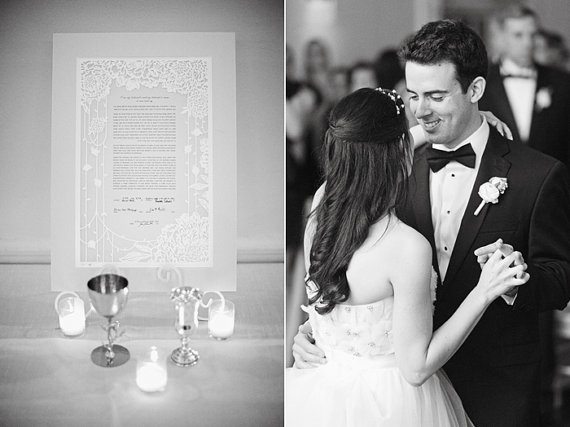
The Solid Wedding Rings
The exchange of rings is the central act of the marriage ceremony. In Jewish law, a verbal declaration of marriage is not legally binding. There must be an act of formal physical acquisition of some object of known value. This answers the ever popular question, “why does the groom place the ring on the bride’s index finger?” It symbolizes the acceptance of the object from the groom to his bride and honoring Jewish law. A circle has no beginning and no end. The use of the solid wedding rings is an eternal union. It is the tradition for these rings to be borrowed and not purchased which follows the object of not having a value.
This information can actually be found in the Talmud (an authoritative record of rabbinic discussions on Jewish law, Jewish ethics, customs, legends, and stories.)
Sheva B’rchot (Seven Blessings)
These blessings praise God for creating human beings, and for making the groom and bride as happy as Adam and Eve were in the Garden of Eden. The blessings declare, ‘the sound of joy; the sound of celebration; the voice of the groom; the voice of the bride.’ The bride and groom seal the seven blessings with their second cup of wine from their new Kiddush cup.
The Tallit
The prayer shawl of a beloved family member or the groom’s Bar Mitzvah Tallit is as symbolic as the traditional stripes on the prayer shawl that extend from one end to the other. The stripes may appear to have an ending, but they represent Judaism as continuous, the cycle of life from generation to generation. The Rabbis wrap the bride and groom for the final priestly blessing. (Can be the bride or groom’s Bar or Bat Mitzvah Tallit or having belonged to a family member)
The Breaking of the Glass
A broken glass cannot be mended. Likewise, marriage is irrevocable. It is a transforming experience that leaves individuals forever changed. While there are many other interpretations of this practice, it signals an end to the Jewish wedding ceremony with shouts of “Mazel Tov!” (Congratulations!)
Judaica artists have now created breaking glasses for all Jewish weddings. They’re all designed to break easily unlike a real drinking glass which could ultimately injure a groom’s foot and ankle.
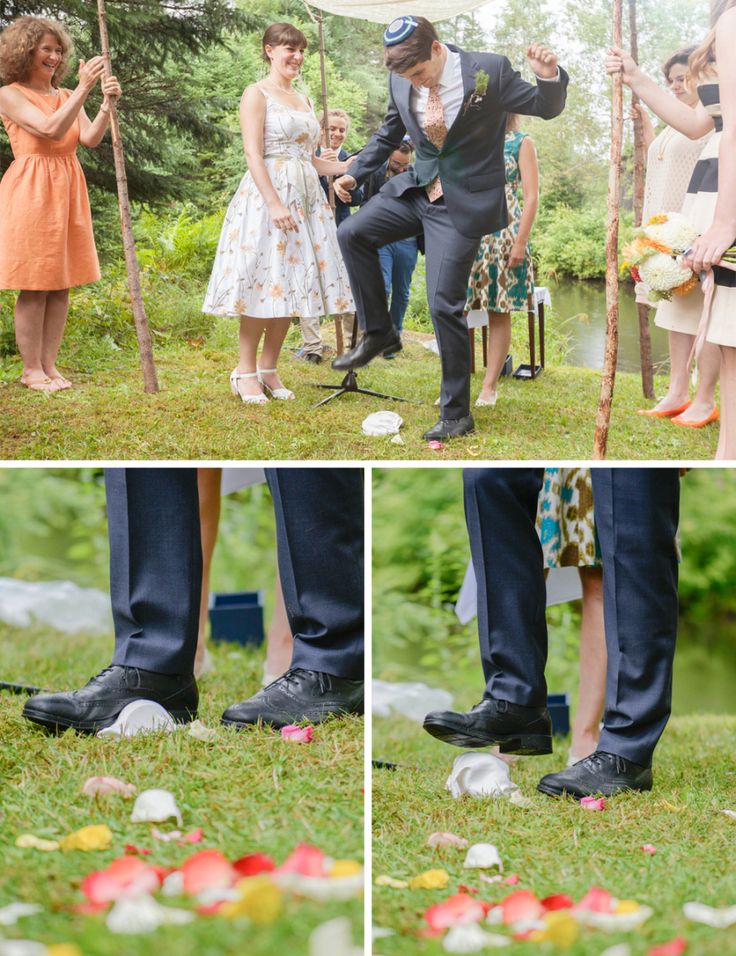
After The Ceremony
The Yichud
It means seclusion and for the couple, it takes place immediately after the ceremony. The bride and groom retreat to a private room to share their first few moments alone together as husband and wife.
The Jewish Wedding Checklist:
- Ketubah
- Two Jewish Witnesses
- Blusher Veil
- Kippah
- Archival Black Pen
- State Marriage License
- Two Witnesses
- Chuppah
- Two Kiddush Cups (Heirloom and New)
- Solid Wedding Rings (borrowed, not purchased)
- Tallit
- Breaking Glass

